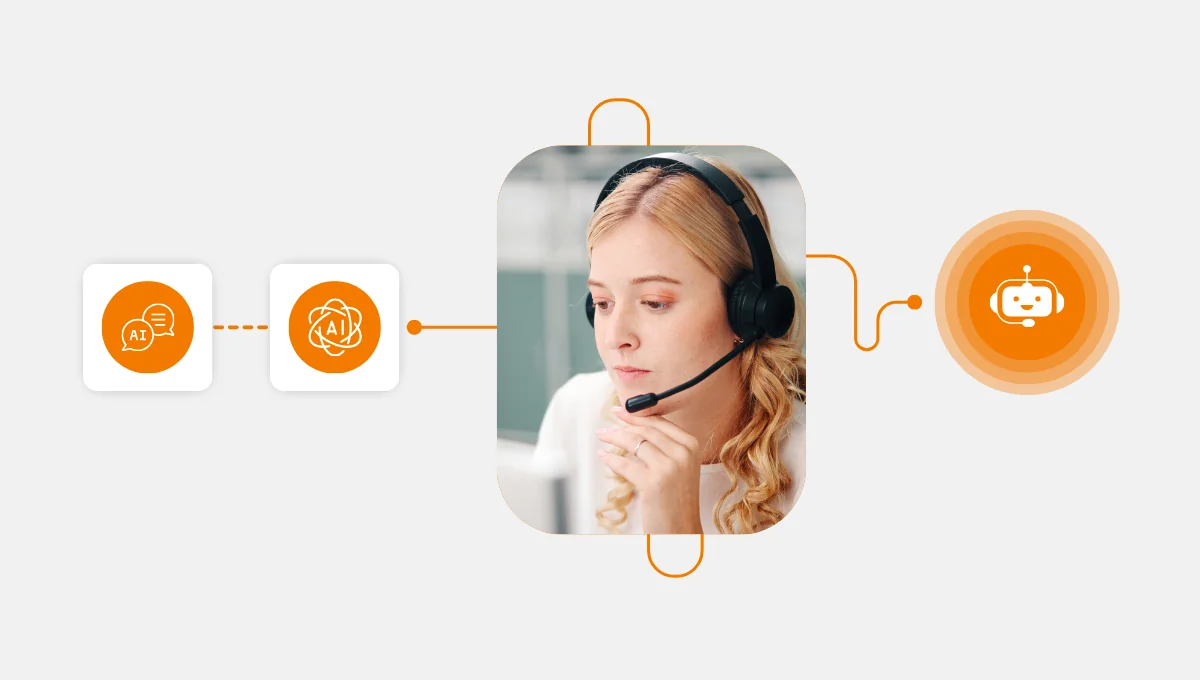Meta Description: Automated Quality Management uses software tools to monitor, evaluate and improve the quality of customer interactions. Learn more about AQM’s benefits, implementation, and limitations.
Automation is at the heart of modern processes. Call center studios continue to pop up daily and facilitate automation across the board. Call center operations haven’t lagged in automation adoption. Cloud call center software was once the biggest trend, today, it is a norm that has seen massive inventive advancements.
In this blog, we will look at automated quality management, one of the most notable call center automation solutions.
What is Automated Quality Management?
Automated quality management (AQM) is designed to automate call centers’ quality management functions. The automation covers voice and text-based cloud call center interactions. AQM system uses artificial intelligence and machine learning to automate aspects including:
- Scoring calls
- Establishing non-compliance
- Assigning coaching
Automating 100% of such aspects benefits the agents and call center. This, in turn, improves security and customer satisfaction rates, which are the call center’s primary goals.
The Benefits of Automated Quality Management
AQM offers a comprehensive view of each call center agent. This is unlike the traditional manual process that usually relies on randomized test data. Such visibility allows managers to improve agents’ performance continuously. This improves the team’s productivity. When well implemented, AQM can transform your call center’s operations in many ways. This is highlighted by the following benefits.
Mitigates compliance risks
Regulatory requirements compliance is critical. Call center agents must follow scripts designed to maintain compliance. This includes providing disclosures during customer interactions. For example, they must notify customers that they are being recorded. Failure to comply could land your organization in costly legal issues. AQM can help lower non-compliance risks by establishing discrepancies.
Improves cloud call center productivity
AQM accounts for 100% of the data, not a sample. This delivers comprehensive, accurate, and objective agent performance evaluation. The comprehensiveness makes it easier for a call center to establish areas needing improvement. The automation also facilitates continuous assessment. This fosters faster and more personalized Call Center Studio agent coaching. The contribution helps enhance agents’ proficiency which improves their productivity. Professional and personal agents’ growth enhances their job satisfaction. Proficiency and job satisfaction further boosts the call center’s productivity, making AQM an invaluable tool.

Enhances efficiency
The quality management process can be resource-intensive. AQM helps deal with time-consuming tasks. It allows managers to focus on more productive areas. Focusing on core functions ensures you squeeze the most out of available resources, improving efficiency.
The automated quality management system can offer a lot more. However, the benefits hinge on its implementation.
How to Implement Automated Quality Management
Cloud call centers make it easier to scale up and include more innovative features. Nonetheless, AQM implementation can prove challenging. The process requires a well-thought approach to ensure you get the most out of the system. Below are straightforward steps that can lead to smooth and productive AQM implementation.
Clear quality standards
You need precise and measurable quality standards for the AQM system to deliver. Establish clear standards such as customer service and call handling. Defining the standards accounts for aspects like:
- Script adherence
- Politeness
- Overall customer satisfaction
- Call duration
- Call resolution
Involve the stakeholders
The last thing you want is a system that your supervisors or agents are against. Involving the stakeholders makes the implementation more productive. This may include training to ensure the stakeholders gain the most value from the system. The involvement also helps to ensure that the implementation aligns with your objectives.
Besides training, remember to provide the agents with access to feedback and evaluation scores. Since they’ll be more involved, it is easier to encourage self-assessment and coaching facilitated by AQM. This improves agents’ engagement and development, allowing you to get more from AQM.
Select the right tool
AQM solutions aren’t all equal. You need to establish your specific requirements to pick the right solution. Among the questions that can help define your needs includes:
- Do you want a system that integrates with your existing infrastructure, like CRM?
- Do you need live monitoring?
- What data do you want to collect?
- Are you interested in reporting capabilities, speech analytics, and sentiment analysis?
- What’s the desired automation level and your budget?
Once you pick the AQM solution, configure it per your set metrics and KPIs. The best part is that you don’t have to automate call center quality management all at once. You can start with the main pain points but pick an agile solution.
Measure results
The implementation isn’t done after you’ve integrated the AQM into your cloud call center. You need to track and measure results. Check changes like cost savings, customer satisfaction, and agent productivity. The results tell you if the program is effective or requires some adjustments.
Continuous improvement
Even with great results, AQM requires improvements. This means regular reviews and updates must be implemented. You may need to update evaluation criteria to reflect evolving customer expectations or business changes. Quality standards updates may also be necessary, especially with ever-changing regulations. The improvements should also factor in feedback from the agents and supervisors. The continuous improvements ensure that the program adapts to the changing landscape. This allows call center AQM to benefit your overall organization operations more.

The Limitations of Automated Quality Management
AQM delivers notable contributions to cloud call centers. Nonetheless, it is not without some downsides. Even with advanced machine learning and AI, AQM’s effectiveness could be limited by aspects including:
- Overemphasis on metrics
The emphasis can result in more focus on quantity over quality. Agents could rush through communications to hit call volume targets. This can impact customer interaction quality.
- Limited contextual understanding
The program understands phrases and keywords. But, it may fail to comprehend emotions and context. This can result in misinterpretations, affecting the evaluations.
- Inadequate soft skills evaluation
AQM effectively assesses objective metrics like script adherence and call duration. However, the evaluation may not account for soft skills like active listening. Nonetheless, such skills are critical in delivering a positive customer experience.
- Adaptability limitations
The program is limited to predefined algorithms and criteria. It may fail to adapt to changes like emerging issues or customer behavior like human agents.
When looking for the best solutions to improve your cloud call center software quality, AQM ticks many boxes. Automated quality management can complement your existing system, like Call Center Studio’s agent quality management. AQM can help enhance customer satisfaction, agents’ development and productivity, and reduce operational costs. Nonetheless, its implementation doesn’t cut out all the work. You must continuously improve the program for better results. You also need to take action in areas that require improvements.




